Energy 1,213 kJ (290 kcal) Sugars 3.1 g Fat 7.72 g | Carbohydrates 23.9 g Dietary fiber 3.6 g Saturated 2.65 g | |
Similar Wheatgrass, Chia, Lingzhi mushroom, Turmeric, Goji | ||
Spirulina represents a biomass of cyanobacteria (blue-green algae) that can be consumed by humans and other animals. There are two species, Arthrospira platensis and Arthrospira maxima.
Contents
- Protein
- Other nutrients
- Vitamin B12 controversy
- Quality related safety and toxicology
- Safety issues for certain target groups
- Animals and aquaculture
- Etymology and ecology
- Historical use
- Research
- Advocates
- References
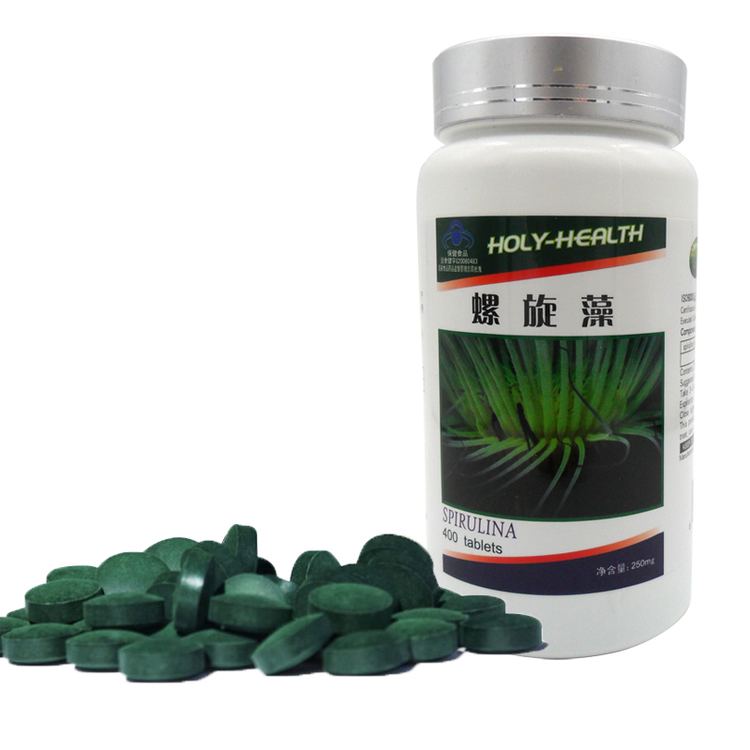
Arthrospira is cultivated worldwide; used as a dietary supplement as well as a whole food; and is also available in tablet, flake and powder form. It is also used as a feed supplement in the aquaculture, aquarium and poultry industries.
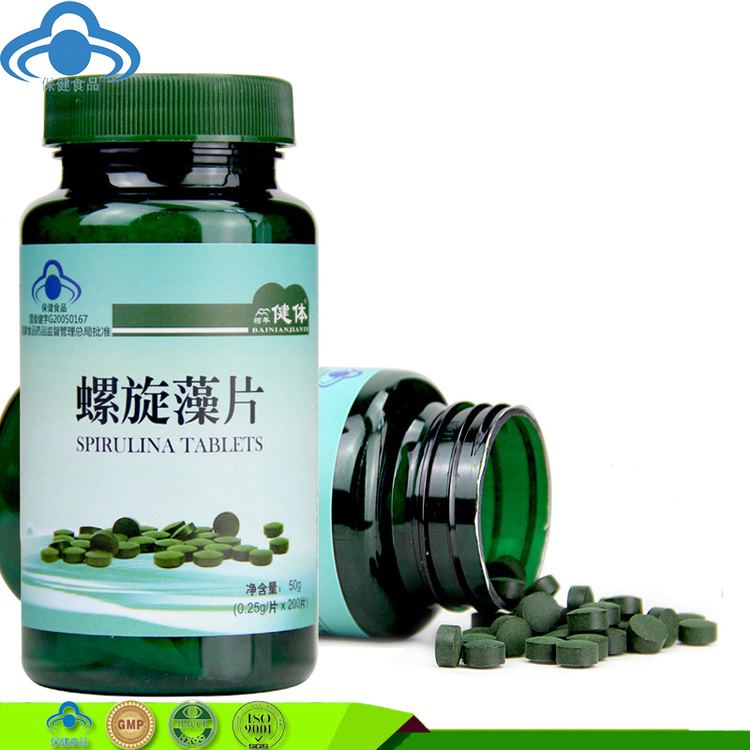
Protein
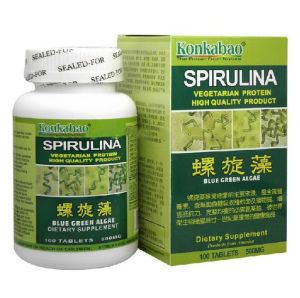
Dried spirulina contains about 60% (51–71%) protein. It is a complete protein containing all essential amino acids, with slightly lower amounts of methionine, cysteine, and lysine compared to certain animal-derived products. From a nutritional point of view, spirulina is no better than other protein sources, but is more expensive gram-for-gram and may have adverse interactions when taken with prescribed drugs.
Other nutrients
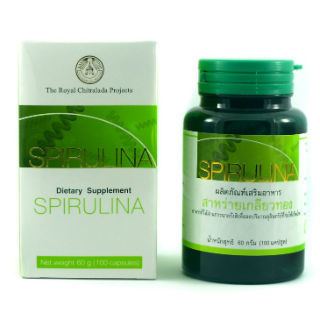
Provided in its typical supplement form as a dried powder having 5% water (table), a 100 gram amount of spirulina supplies 290 Calories and is a source (20% or more of the Daily Value, DV) of numerous nutrients, particularly B vitamins (thiamin and riboflavin, 207% and 306% DV, respectively) and dietary minerals, such as iron (219% DV) and manganese (90% DV) (table).
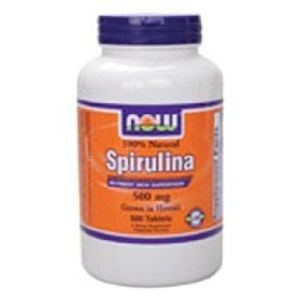
Spirulina's lipid content is 8% by weight (table) providing gamma-linolenic acid, alpha-linolenic acid, linoleic acid, stearidonic acid, eicosapentaenoic acid, docosahexaenoic acid, and arachidonic acid.
Vitamin B12 controversy
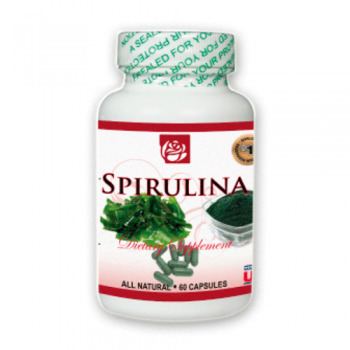
Spirulina does not contain vitamin B12 naturally (see table), and spirulina supplements are not considered to be a reliable source of vitamin B12, as they contain predominantly pseudovitamin B12, which is biologically inactive in humans. Companies that grow and market spirulina have claimed it to be a significant source of B12 on the basis of alternative, unpublished assays, although their claims are not accepted by independent scientific organizations. The American Dietetic Association and Dietitians of Canada in their position paper on vegetarian diets state that spirulina cannot be counted on as a reliable source of active vitamin B12. The medical literature similarly advises that spirulina is unsuitable as a source of B12.
Quality-related safety and toxicology

Spirulina is a form of cyanobacterium, some of which are known to produce toxins such as microcystins, BMAA, and others. Some spirulina supplements have been found to be contaminated with microcystins, albeit at levels below the limit set by the Oregon Health Department. Microcystins can cause gastrointestinal disturbances and, in the long term, liver damage. The effects of chronic exposure to even very low levels of microcystins are of concern, because of the potential risk of toxicity to several organ systems and possibly cancer.
These toxic compounds are not produced by spirulina itself, but may occur as a result of contamination of spirulina batches with other toxin-producing blue-green algae. Because spirulina is considered a dietary supplement in the U.S., no active, industry-wide regulation of its production occurs and no enforced safety standards exist for its production or purity. The U.S. National Institutes of Health describes spirulina supplements as "possibly safe", provided they are free of microcystin contamination, but "likely unsafe" (especially for children) if contaminated. Given the lack of regulatory standards in the U.S., some public-health researchers have raised the concern that consumers cannot be certain that spirulina and other blue-green algae supplements are free of contamination.
Heavy-metal contamination of spirulina supplements has also raised concern. The Chinese State Food and Drug Administration reported that lead, mercury, and arsenic contamination was widespread in spirulina supplements marketed in China. One study reported the presence of lead up to 5.1 ppm in a sample from a commercial supplement.
Safety issues for certain target groups
Like all protein-rich foods, spirulina contains the essential amino acid phenylalanine (2.6-4.1 g/100 g), which should be avoided by people who have phenylketonuria, a rare genetic disorder that prevents the body from metabolizing phenylalanine, which then builds up in the brain, causing damage.
Spirulina contaminated with microcystins has various potential toxicity, especially to children, including liver damage, shock and death.
Animals and aquaculture
Various studies on spirulina as an alternative feed for animal and aquaculture were done. Spirulina can be fed up to 10% for poultry and less than 4% for Quail. Increase in the Spirulina content up to 40g/kg for 16 days in 21-day-old broiler male chicks, resulted in yellow and red coloration of flesh and this may be due to the accumulation of the yellow pigment, zeaxanthin. Pigs, rabbits and lambs can receive up to 10% of the feed and increase in the Spirulina content in cattle resulted in increase in milk yield and weight. Spirulina as an alternative feedstock and immune booster for big mouth buffalo, milk fish, cultured striped jack, carp, red sea bream, tilapia, catfish, yellow tail, zebrafish, shrimps and abalone was established and up to 2% Spirulina per day in aquaculture feed can be safely recommended.
Toxicological studies of the effects of spirulina consumption on humans and animals, including feeding as much as 800 mg/kg, and replacing up to 60% of protein intake with Spirulina, have shown no toxic effects. Fertility, teratogenicity, peri- and postnatal, and multigenerational studies on animals also have found no adverse effects from Spirulina consumption.
Etymology and ecology
The maxima and plaetensis species were once classified in the genus Spirulina. The common name, Spirulina, refers to the dried biomass of Arthrospira platensis, which belongs to the oxygenic photosynthetic bacteria that cover the groups Cyanobacteria and Prochlorales. These photosynthetic organisms, Cyanobacteria, were first considered as algae until 1962 and for the first time, these blue green algae were added to prokaryote kingdom and proposed to call these microorganisms as Cyanobacteria where algae is considered to be a very large and diverse group of eukaryotic organisms. This designation was accepted and published in 1974 by the Bergey's Manual of Determinative Bacteriology. Scientifically, there is a quite distinction between Spirulina and Arthrospira genus. Stizenberger, in 1852 gave the name Arthrospira based on the septa presence, helical form and multicellular structure and Gomont in 1892, confirmed aseptate form of the Spirulina genus. Geitler in 1932, reunified both members designating them as Spirulina without considering the septum. The worldwide research on microalgae was carried out in the name of Spirulina, but the original species exploited as food with excellent health properties belongs to genus Arthrospira. This common difference between scientists and customers is difficult to change. These Arthrospira genus, constitute a helical trichomes of varying size and with various degree of coiling including tightly coiled morphology to even straight uncoiled form. The filaments are solitary and reproduce by binary fission and the cells of the trichomes vary from 2 μm to 12 μm and can sometime reach up to 16 μm. Species of the genus Arthrospira have been isolated from alkaline brackish and saline waters in tropical and subtropical regions. Among the various species included in the genus Arthrospira, A. platensis is the most widely distributed and is mainly found in Africa but also in Asia. Arthrospira maxima is believed to be found in California and Mexico. They are now agreed to be in fact Arthrospira; nevertheless, and somewhat confusingly, the older term Spirulina remains in use for historical reasons.
Arthrospira species are free-floating filamentous cyanobacteria characterized by cylindrical, multicellular trichomes in an open left-hand helix. They occur naturally in tropical and subtropical lakes with high pH and high concentrations of carbonate and bicarbonate. A. platensis occurs in Africa, Asia, and South America, whereas A. maxima is confined to Central America. Most cultivated spirulina is produced in open channel raceway ponds, with paddle-wheels used to agitate the water. The largest commercial producers of spirulina are located in the United States, Thailand, India, Taiwan, China, Bangladesh, Pakistan, Burma (Myanmar), Greece, and Chile.
Spirulina thrives at a pH around 8.5 and above, which will get more alkaline, and a temperature around 30 °C (86 °F). They are able to make their own food, and do not need a living energy or organic carbon source. In addition, spirulina has to have an ensemble of nutrients to thrive in a home aquarium or pond. A simple nutrient feed for growing it is:
which can all be found in aquarium or else in the agricultural division, all commonly occurring compounds except for the iron sulphate. The algae has actually been tested and successfully grown in human urine at 1:180 parts. After 7days, 97% of NH4+-N, 96.5% of total phosphorus (TP) and 85–98% of urea in the urine (about 120-diluted) were removed by the microalgae under autotrophic culture (30 °C).
Historical use
Spirulina was a food source for the Aztecs and other Mesoamericans until the 16th century; the harvest from Lake Texcoco and subsequent sale as cakes were described by one of Cortés' soldiers. The Aztecs called it "tecuitlatl".
Spirulina was found in abundance at Lake Texcoco by French researchers in the 1960s, but no reference to its use was made by the Aztecs as a daily food source after the 16th century, probably due to the draining of the surrounding lakes for agricultural and urban development. The topic of the Tecuitlalt, which was earlier discovered in 1520, was not mentioned again until 1940, the French phycologist Pierre Dangeard mentioned about a cake called “dihe”, consumed by Kanembu tribe, African Lake Chad, Kanem (Chad, Africa). Dangeard studied the “dihe” samples and found that it is like a puree of spring form blue algae. Spirulina has also been traditionally harvested in Chad. It is dried into dihé, which are used to make broths for meals, and also sold in markets. The spirulina is harvested from small lakes and ponds around Lake Chad.
During 1964 and 1965, the botanist Jean Leonard, during his Belgian Trans-Saharan Expedition, confirmed that dihe is made up of Spirulina and thus chemical analysis was started on Spirulina. During that time, Léonard received a request from Sosa-Texcoco Ltd, Mexico to study a bloom of algae in their sodium hydroxide production facility. As a result, the first systematic and detailed study of the growth requirements and physiology of Spirulina was performed. This study, which was a part of Ph.D. thesis by Zarrouk (1966) was the basis for establishing the first large-scale production plant of Spirulina. Spirulina, in 1967 was established as a “wonderful food source” by the International Association of Applied Microbiology.
The first large-scale spirulina production plant, run by Sosa Texcoco, was established there in the early 1970s.
Research
At present, research is preliminary. According to the U.S. National Institutes of Health, scientific evidence is insufficient to recommend spirulina supplementation for any human condition, and more research is needed to clarify its benefits, if any.
Administration of spirulina has been investigated as a way to control glucose in people with diabetes, but the EFSA rejected those claims in 2013. Live cultures of Spirulina (Arthospira) sp grown in open raceway ponds were used for removal of lead from waste water.
Advocates
In 1974, the World Health Organization described spirulina as "an interesting food for multiple reasons, rich in iron and protein, and is able to be administered to children without any risk," considering it "a very suitable food." The United Nations established the Intergovernmental Institution for the use of Micro-algae Spirulina Against Malnutrition in 2003.
In the late 1980s and early 90s, both NASA (CELSS) and the European Space Agency (MELiSSA) proposed spirulina as one of the primary foods to be cultivated during long-term space missions.
